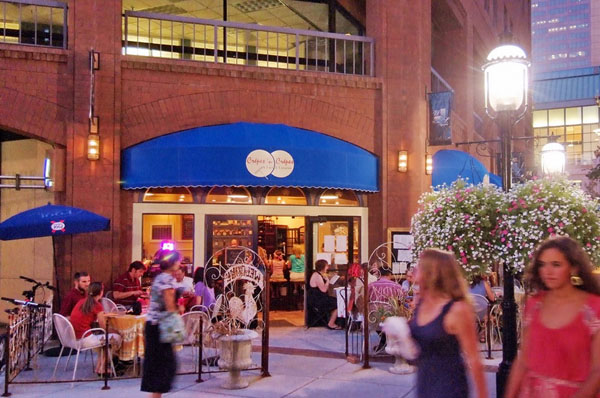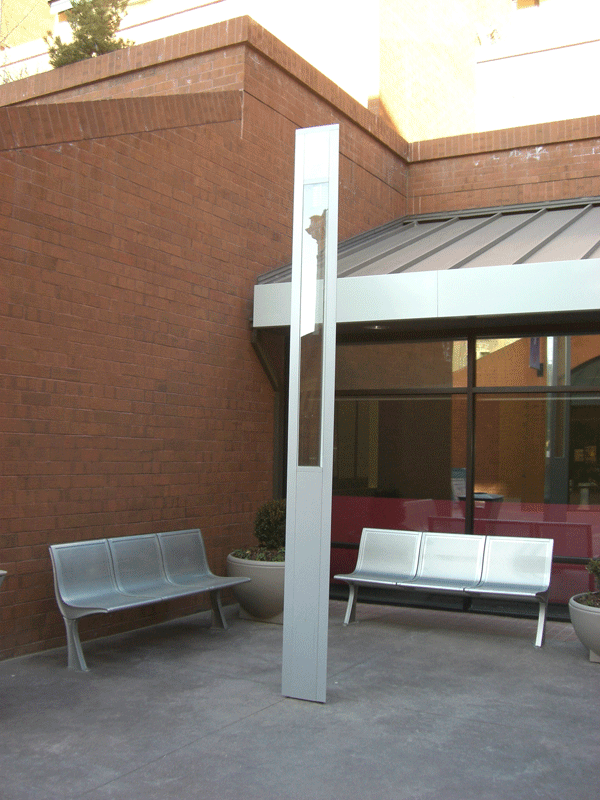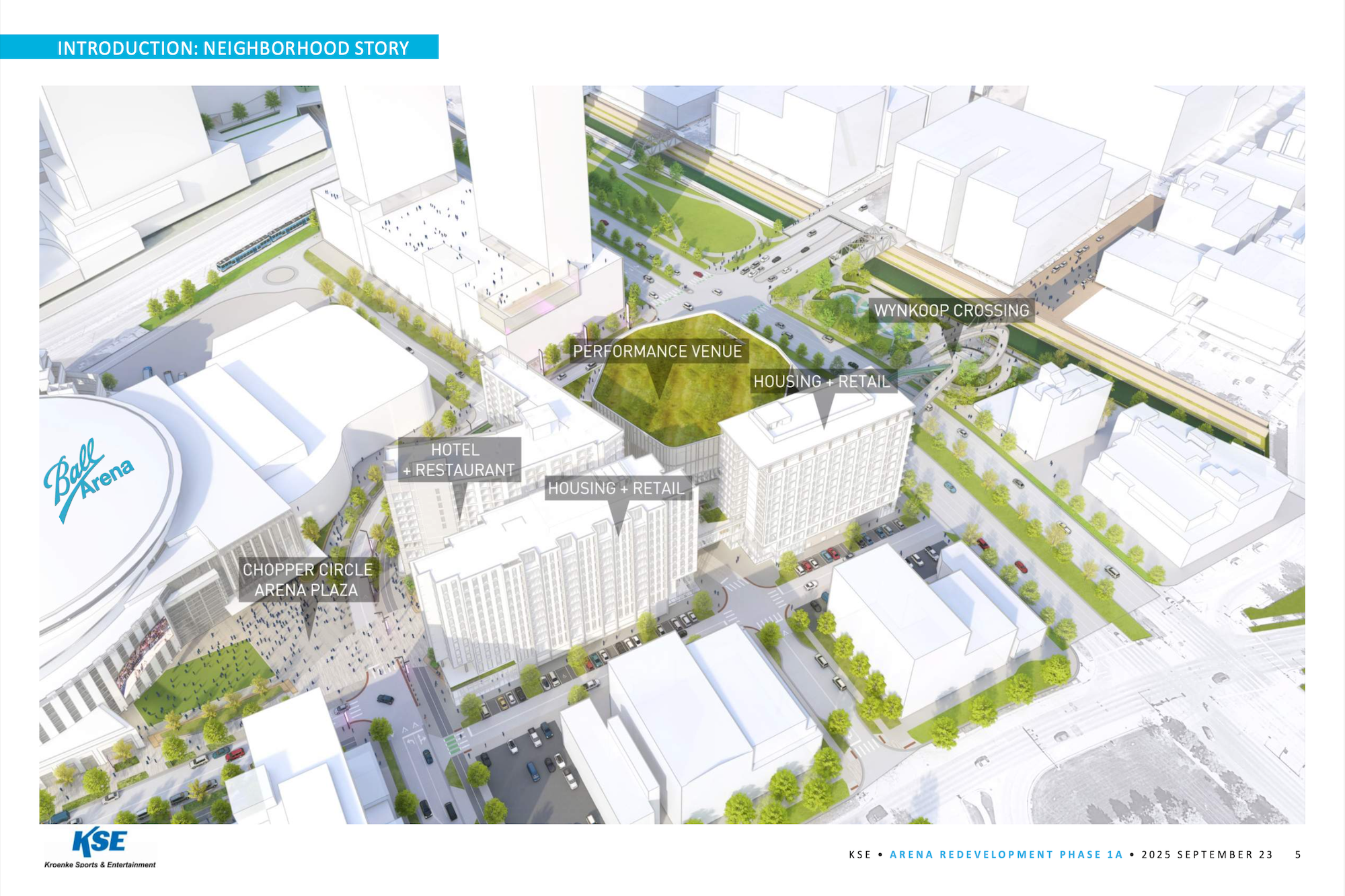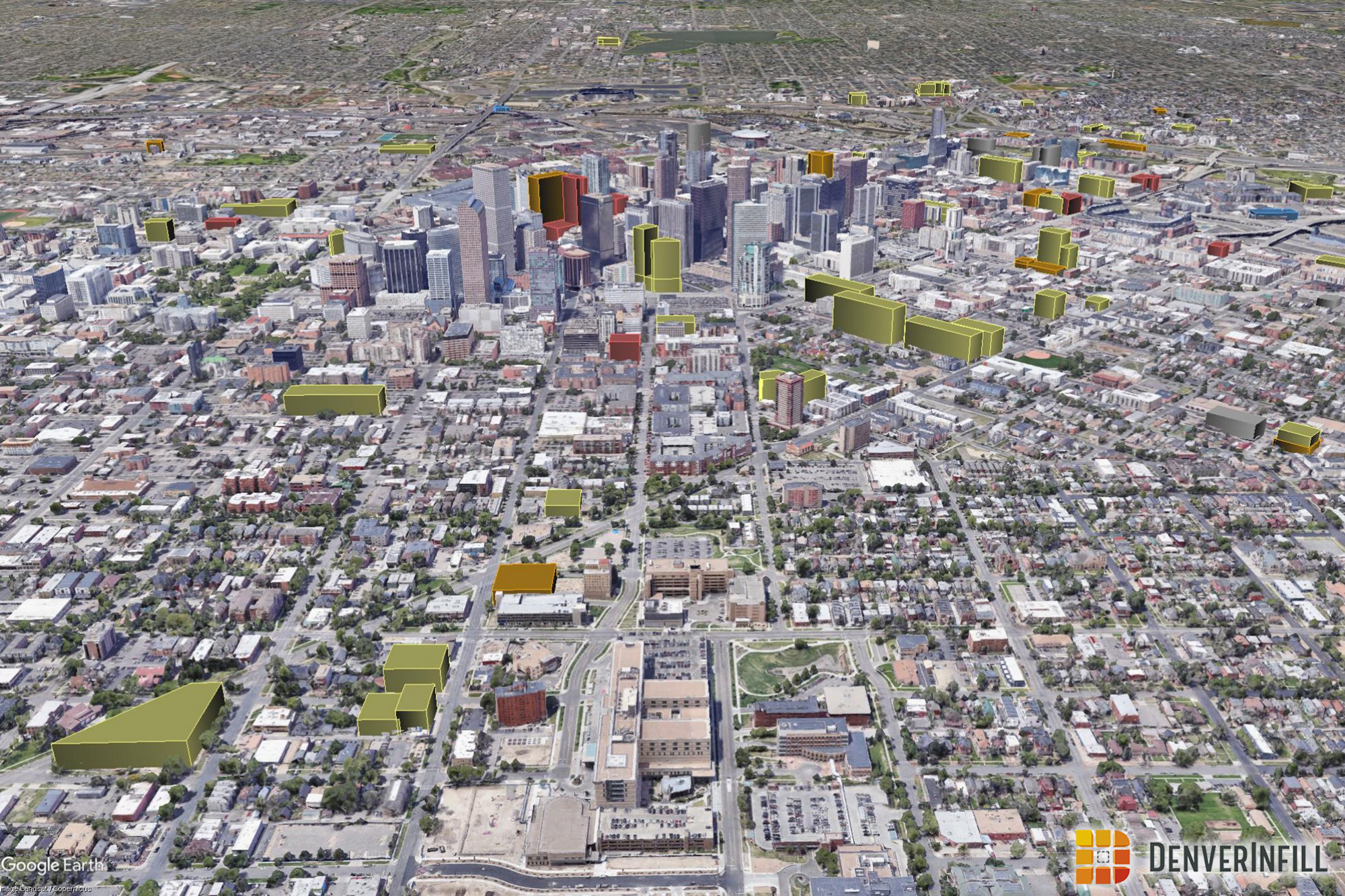Site lighting can be a tricky thing. Too much of it or too little of it can make a place inhospitable or uncomfortable, sterile or scary. Often, the most successful lighting of outdoor spaces is the lighting that is not noticed at all –providing a level of comfort while not being in your face. At other times, light fixtures can be used as an interesting site element – providing sufficient lighting when needed, and visual interest when the sun is shining.
Back in the day (you know, way back in the spring of 2009), lighting of the outdoor spaces of Writer Square was provided by referential gas lamp style fixtures, installed on a fairly regimented grid across the block. During the warmer months overflowing baskets of flowers hung from the light posts, lending color and interest to the different spaces. The grid, however, seemed to have as its origin a line directly along the visual axis of the central corridor connecting the north and south plazas. Because of this alignment, walking through the already-tight corridor was made perceptively tighter. With the adherence to the lighting grid, many of the lights are located very close to building walls and interfere with restaurant patios. And while the flowers were beautiful, I found myself dodging the fixtures so that my thick mane of hair wouldn’t be attacked by overzealous petunias.
In the redevelopment of the outdoor spaces of Writer Square, the referential lighting has (largely) been replaced by a contemporary fixture – triangular and columnar, with visual porosity through the lens area. This fixture recalls the triangular footprint of the light fixtures along the Mall – a nice reference to an iconic design. It appears that the lights have been placed on the same grid, at the same locations, as the previous poles. (The image above on the right highlights the locations of the lights within the current design of the site.)
While it is understandable that the new fixtures would be located at the same place as the old (due to the cost to relocate electrical service, for instance), the effect of the new fixture is to make the lighting appear more prominent. Where the former fixture had a large luminaire atop a narrow pole, the new columnar fixture is 2 to 3 times as wide as the previous post – creating 2 to 3 times the mass in the pedestrian’s frame of view. And when viewed along the axis of movement through the central corridor, divides an already-narrow space.
In certain cases, it appears that the sanctity of the lighting grid trumped all else. For instance, one light along Larimer Street was located so close to an existing tree that it appears somebody had to physically lift a large limb in order to get the pole in place (yes, the branch is resting on the light fixture). In another case, a light serves as the focal point of a secluded seating area – and I’m not sure about you, but if I’m sitting in a secluded area I don’t think I want to be illuminated as if on stage…
I always found the lighting of Writer Square to be comfortable in the evenings, and the new fixture replaces in kind the lighting levels provided by the former pole. But the spaces today are far brighter at night than in the original design, thanks to relatively new technology that allows lights to be placed in handrails. In the previous post, the proliferation of handrails on the stairs of the 16th Street plaza was mentioned – but these do not represent even half of the handrails located throughout the site. And every handrail is equipped with an LED light. The effect is to overwhelm the space with light – and higher light levels do not necessarily equate to higher comfort levels.
The redesign of the Square was an opportunity to rethink the lighting of a public space. A mentor explained to me long ago that lighting should be used to light the edges of a space rather than the movement corridors – so as to illuminate the shadows (and the scary things they may hold) and not the pedestrian. Opportunities abound within Writer Square to use ambient light from retail storefronts to light the edges of the outdoor spaces. Certainly, some level of additional lighting is both necessary and desirable, and the use of light fixtures as visual site interest has much merit. It seems, however, that lighting as an element of interest in this case has perhaps been too-highly regarded.
















Funny I didnt realize the lights were on the same grid as before. I guess now theyre so bulky, I noticed them more. Great posts!
I don’t think the lights would bother me so much if… they weren’t all slanting slightly, and went all the way to the ground instead of that awkward little gap. I guess they just look cheap to me, which is unfortunate. Additionally, the plastic planter boxes have the exact same two issues.
Great posts!
Those things look like they were bought up at a Moscow garage sale just after the Soviet Union. I liked the old lampstands. They gave the area and “Euro” feel to it. But I guess old Communist Eastern Europe is still Euro…
what a waste of money! this redesign is laughable and provides little improvement to the flow of traffic through the corridor. the handrails might as well be turnstiles.
as a first time reader i would like to say nice blog.